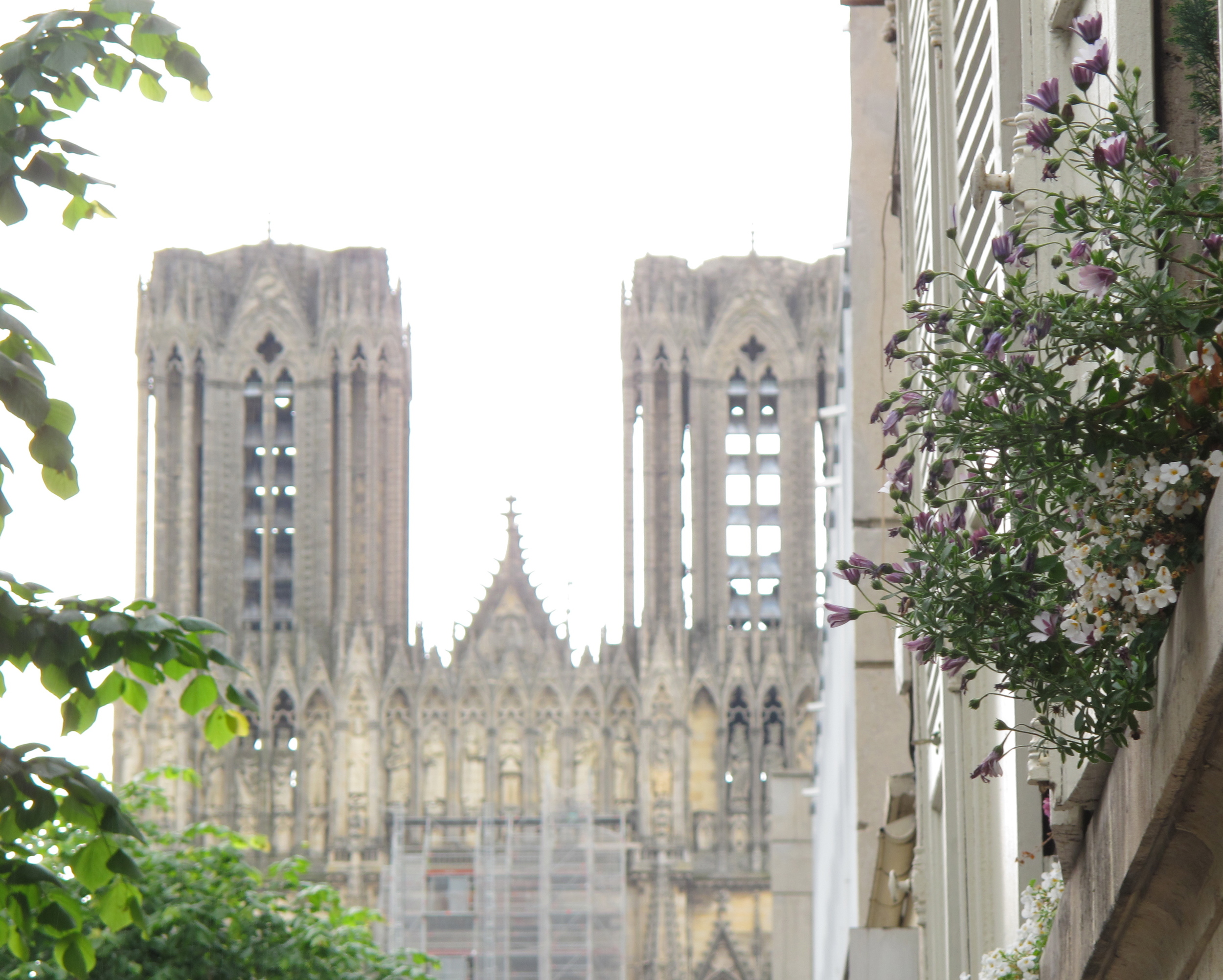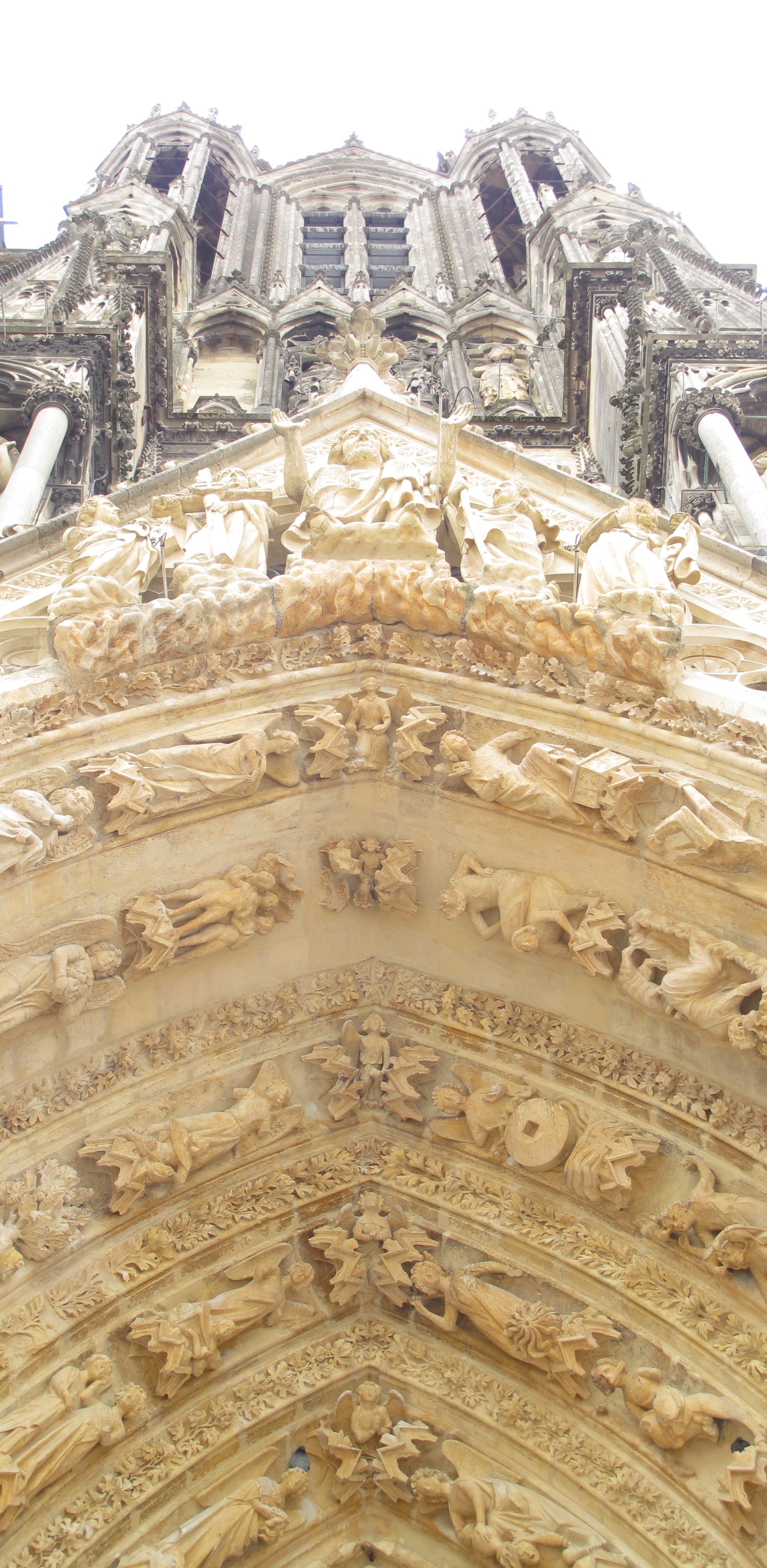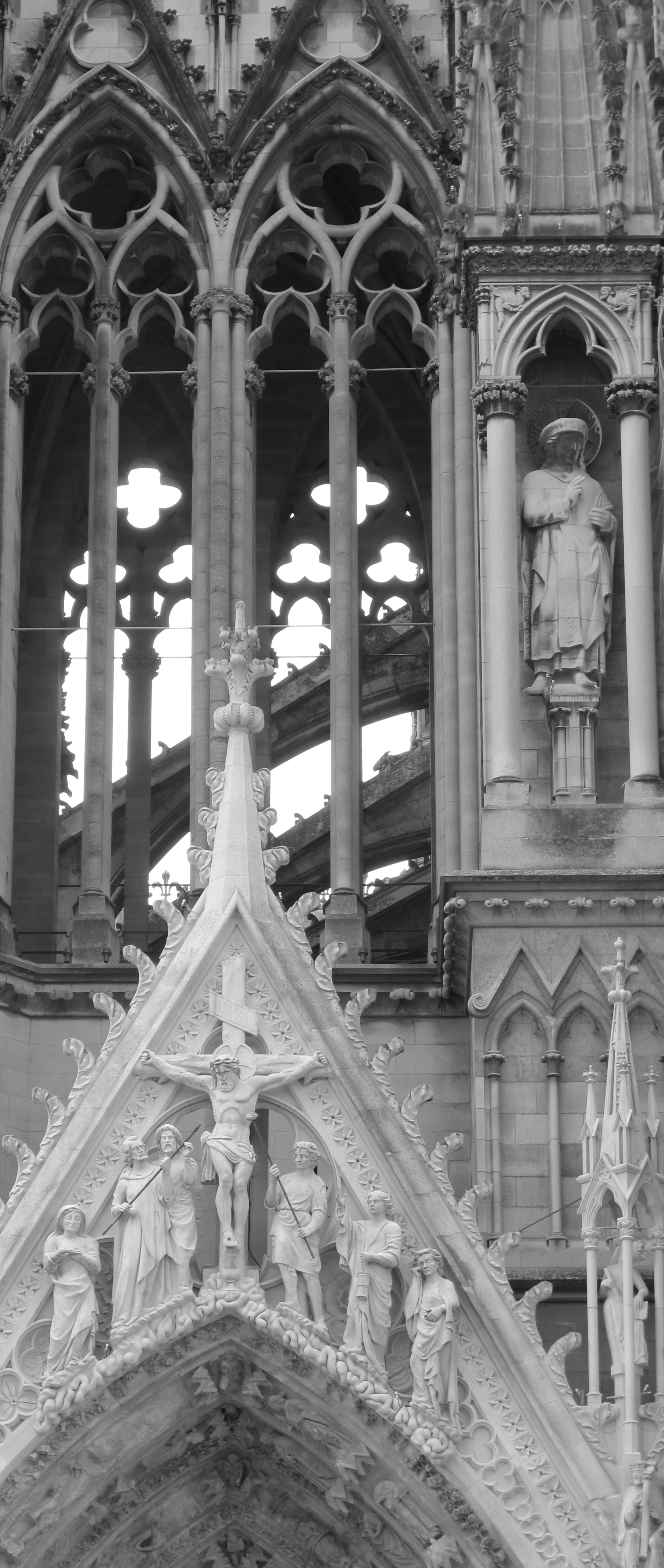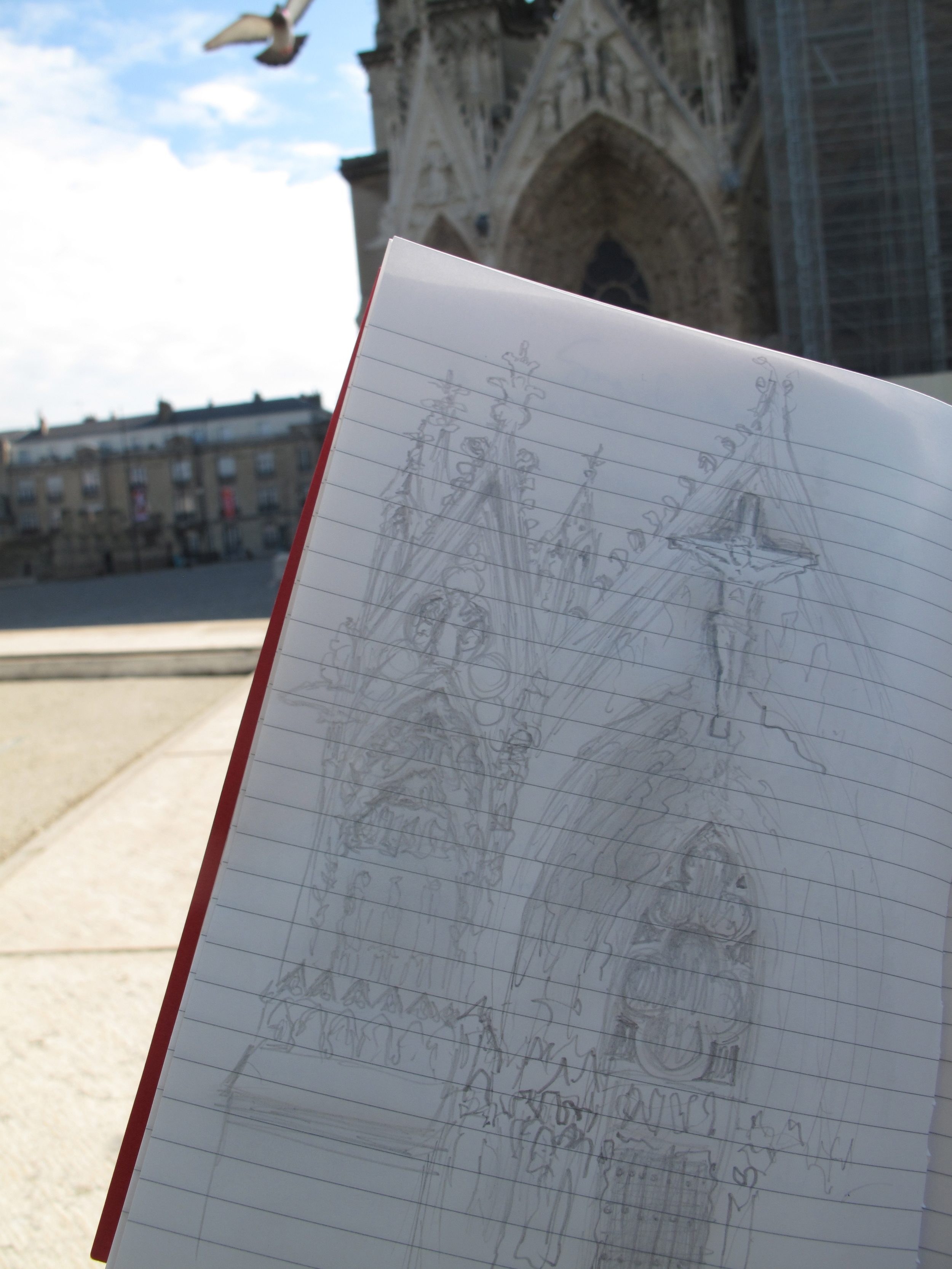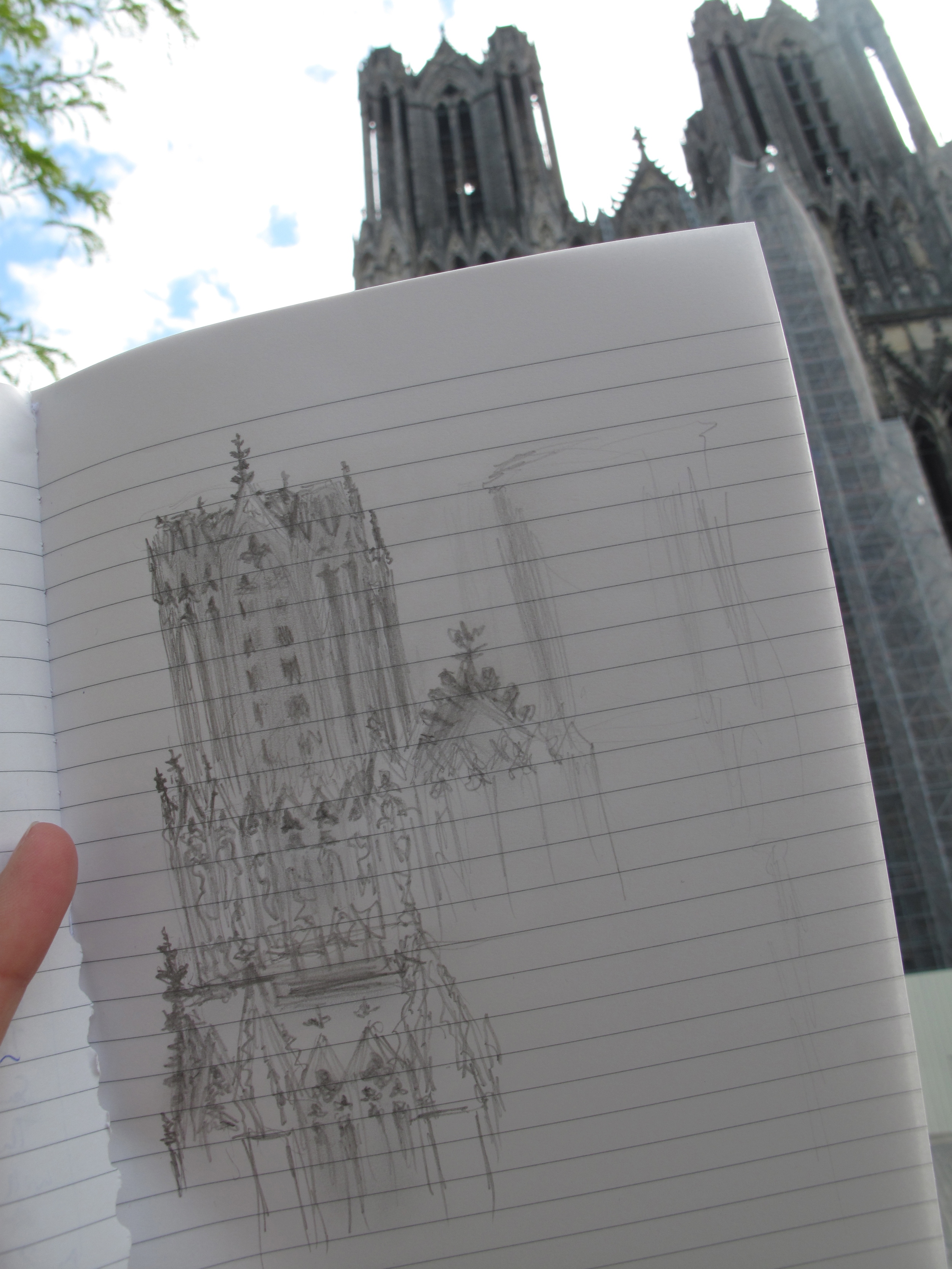CLAIRSENTIENCE
noun | clair.sentience | ,kler"sen(t)SH(ē)ans
clair - to see + sentient - to feel | clairsentient - clear feeling.
The ability to perceive things strongly and clearly, including things others may not normally feel: others emotions, the energies of people, animals and plants, and possibly spirits.
Reims Cathedral has been called the epitome of Gothic architecture.
The windows are centered like jewels in their casings; glinting royal blues and purples, deep magentas and fine spidery traces of green and ochre. Between all these windows, the walls of the church begin to give way and dissolve into light.
In the Gothic quest for height, this Cathedral was one of the tallest of its time. Inside, the ribbed vaulting and pointed arches are all vertically inclined, and every part of the edifice works to draw the eye upwards. And, oh, those pointed arches! An architectural marvel, after centuries of the limiting Romanesque rounded arch, the pointed arch dispersed the forces of gravity, allowing masons to perforate the walls with those enormous windows.
Reims Cathedral is a pumice-like creation of light and rock, reaching toward the heavens.
⚜♕⚜
What makes Reims even more captivating, in my mind, is the history that happened within.
Reims was the site of the baptism of Clovis, first King of the Franks - thus establishing a precedence at this cathedral for the divine unction and the coronation of kings. It was also here that Joan of Arc led Charles the Dauphine, through town after town that had been occupied by the English. And without bloodshed, each town was recaptured, until, at Reims, Charles was formally crowned king with Joan standing by.
When I first glimpsed Reims, my mind swirled with words I had read on paper: ambulatories, covered galleries, west portals, tympanums and arcades. Spires, traceries, masons, lead-workers and pilgrim-walkers.
The place seemed encrusted with time. Inside, I could almost hear the whisperings of a million prayers. It smelled of wax and candle wicks.
After admiring the rose windows, I walked between the isles. Then, rounding a corner, a strange feeling overcame me. Before me was a statue of a figure, as small as a child, and dressed like a boyish knight. The feeling became stronger, and tingled in my fingers - somehow I knew this figure. Somehow, this person, this place, was important, and the importance was lingering in the very air around me. Goosebumps. Stepping forward, it slowly dawned on me who the statue represented: Joan of Arc. From the backlogs of my memory, my mind whispered that, yes, Joan of Arc had been here. In fact, upon reading the sign, I learnt that this was the precise place where Joan had stood beside King Charles VII, during his coronation.
I had been called to Reims by the architecture alone, yet now I was utterly overwhelmed by the feeling that Joan's presence was, well... still present. Emotions bubbled up from some unknown source, and I kneeled in reverence and contemplation.
I returned to that spot a few times before leaving Reims, and each time, I felt Joan there.
JOAN D'ARC
&
CLAIRAUDIENCE
Joan of Arc mentioned her own powers of perception many times. She told friends, and even her inquisitors, of the voices she would hear - instructing her in life, in her mission to speak with the Dauphine, and in battle. Altogether, it is uncanny what Joan achieved before the age of nineteen.
Joan accredited the voices she heard to St. Michael, St. Catherine and St. Margret. She would also see visions of light, and sometimes felt the presence of these saints. Notably, her first episode of clairaudience - a heightened ability to hear things - happened in her father's small garden. And, from this point on, Joan seems to have heard more clearly when she was surrounded by nature, in meadows, and in the woods.
Tuesday, Feb 27, 1431. Fourth Session in the Trial of Joan d'Arc.
... Asked whether the voice which spoke to her was that of an angel, or of a saint, male or female, or straight from God, she answered that the voice was the voice of St. Catherine and St. Margaret. And their heads were crowned in a rich and precious fashion with beautiful crowns.
“Near Jeanne d’Arc’s home at Domremy there was a wood in which stood a beech-tree called the Ladies’ Tree, or the Fairies’ Tree, famous throughout the countryside. As a child, Jeanne used to hang on its branches garlands of leaves and flowers, and dance under it with the other children. A great deal was made of this by her inquisitors - dark things were said: the garlands vanished during the night, the birds in the oak-wood fed from her lap, the wolves there would not hurt Jeanne’s sheep. There was always the mystery of the voices, to which, when they had stupefied the child of another world and burned a saint, they were no nearer.
In the course of her long trial they asked her if she still heard her voices. Worn out with questions and learned subtleties, “Menez-moi dans un bois,” she said, “et je les entendrai bien.”
Lead me into the woods, she said. I will hear them well.”
““The mystery of nature and life hovers about the columned temple of the forest. The secret is always behind a tree, as of old time it was always behind the pillar of the temple.””

